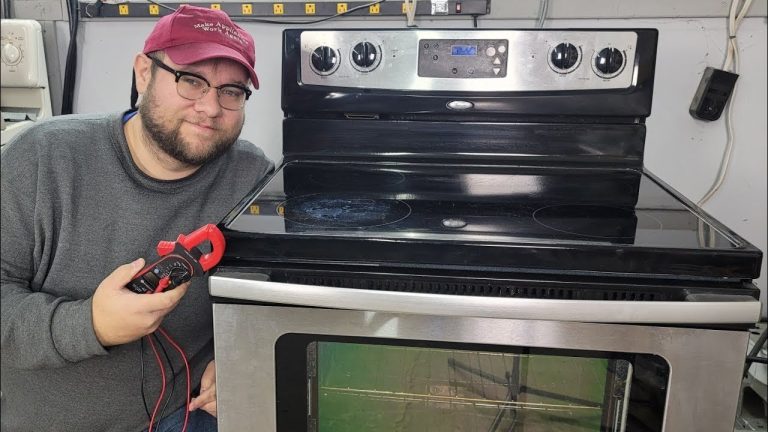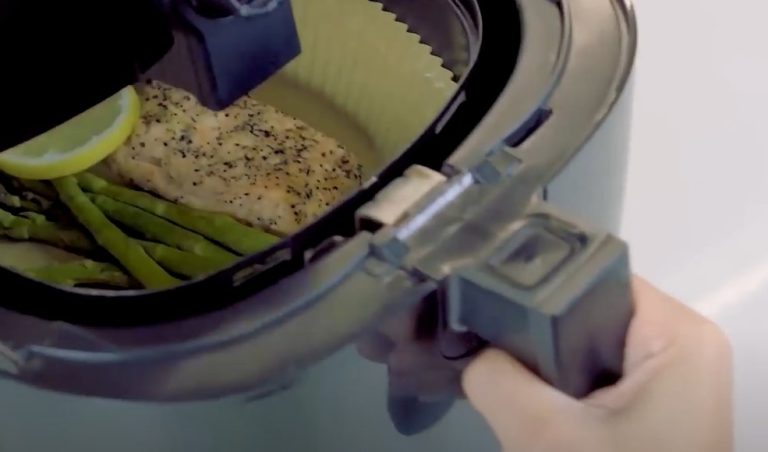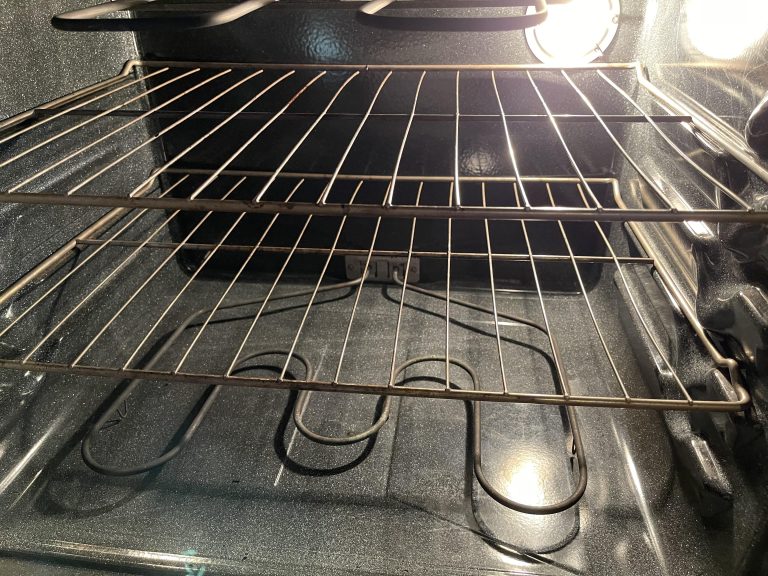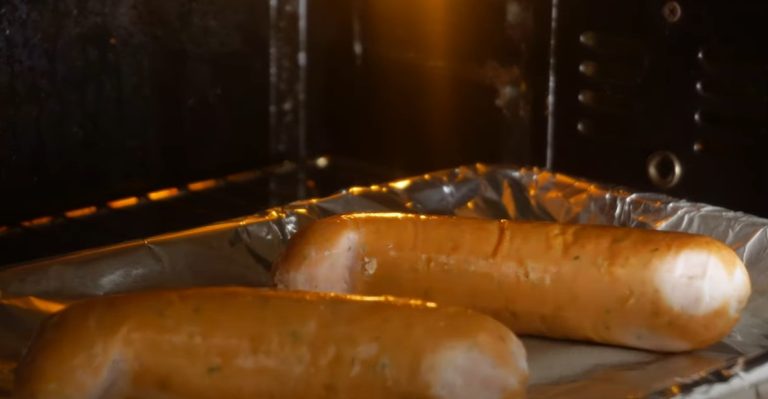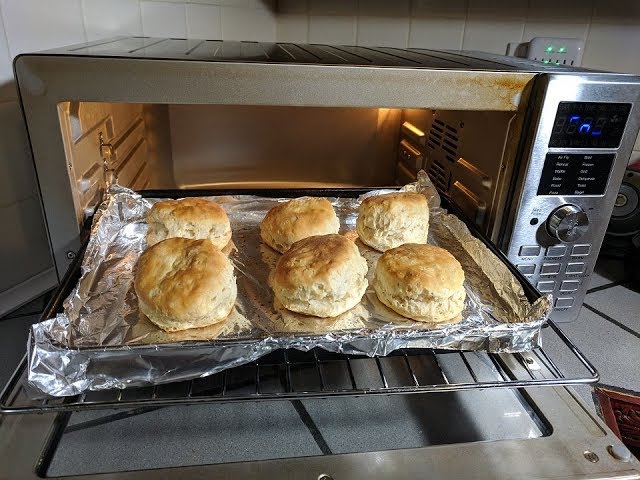Why Doesn’t My Oven Heat Up? Troubleshoot Now!
Why doesn’t my oven heat up? Your oven may not heat up due to a faulty heating element, broken igniter, blown fuse, tripped circuit breaker, or malfunctioning thermostat. Gas ovens may have gas supply issues. Check power or gas connections, and if parts are damaged, replace them or call a professional for repair.
Frustrating, right? If you’ve ever wondered, “Why doesn’t my oven heat up? ” You’re not alone. This common kitchen conundrum can disrupt your cooking plans and leave you puzzled. But don’t worry. We’ll delve into the possible reasons behind your oven’s stubbornness and offer practical solutions to get it back on track.
So, let’s uncover the mystery and reignite your passion for cooking!

Credit: www.ahs.com
Why Doesn’t My Oven Heat Up?
Common Causes
Oven not heating could be due to a faulty heating element. Another possibility is a broken thermostat. Issues with electrical connections might also be the cause.
Is your oven refusing to heat up, leaving your culinary plans in disarray? You’re not alone. Many people encounter this frustrating issue. Understanding the common causes can help you pinpoint the problem and get your oven back on track. Let’s dive into some typical reasons your oven might not be heating as it should.
1. Faulty Heating Element
A malfunctioning heating element is a frequent culprit. Both electric and gas ovens rely on these elements to produce heat. If your oven’s heating element is damaged, it won’t reach the desired temperature. Look for visible signs of damage, like breaks or blisters. If you spot any, it might be time to replace the element.
2. Defective Thermostat
The thermostat is the oven’s brain. It regulates the temperature by signaling when to heat up or cool down. A defective thermostat can cause inconsistent temperatures or prevent the oven from heating entirely. Consider testing the thermostat with a multimeter to confirm if it’s working correctly.
3. Broken Igniter
In gas ovens, the igniter is crucial for lighting the gas and creating heat. A broken igniter won’t light the gas, leaving your oven cold. Listen for a clicking sound or check for a visible spark when the oven is on. If there’s none, the igniter might need replacement.
4. Power Supply Issues
Sometimes, the issue is as simple as a power supply problem. Check if your oven is securely plugged in and that the circuit breaker hasn’t tripped. It might seem basic, but these are common oversights that can easily be fixed.
5. Control Board Malfunction
The control board manages all oven functions. If it malfunctions, your oven may not heat up. This issue can be more complex to diagnose. Look for error codes on your oven’s display or consult the manual for troubleshooting steps.
6. Sensor Failure
The temperature sensor in your oven plays a key role in maintaining the right heat levels. If it fails, the oven might not heat properly. Ensure the sensor is neither loose nor touching the oven wall, which can affect its accuracy. Have you checked these components in your oven? Sometimes, solving the issue is simpler than you think. Each cause provides a path to a solution, and tackling these steps can save you from unnecessary stress and repair costs.

Credit: www.youtube.com
Thermostat Issues
Have you ever found yourself eagerly waiting for your oven to heat up, only to discover it’s not cooperating? One common culprit behind this frustration is thermostat issues. The thermostat, acting as the oven’s brain, is responsible for maintaining the desired temperature. When it malfunctions, it throws off the entire heating process. Understanding how thermostat issues can affect your oven is key to fixing the problem and getting back to cooking your favorite meals.
What Does The Thermostat Do?
The thermostat is essential in regulating the temperature inside your oven. It constantly monitors the heat level and signals the heating elements to adjust accordingly. If the thermostat isn’t working properly, your oven might fail to reach the desired temperature, leading to undercooked or unevenly cooked food.
Signs Of A Faulty Thermostat
Is your oven taking longer than usual to heat up or not heating at all? These could be signs of a faulty thermostat. If your cookies are coming out raw despite following the recipe to the letter, the thermostat might be to blame. Listen for unusual clicking noises, as they can indicate that the thermostat is struggling to maintain the temperature.
Testing The Thermostat
You can test your oven’s thermostat with a simple oven thermometer. Place it inside the oven and preheat to a specific temperature. Compare the reading on the thermometer with the oven’s setting. If there’s a significant difference, the thermostat may need attention. Consider consulting a professional to examine and possibly replace it.
Diy Fixes: Are They Worth It?
While fixing the thermostat yourself might sound tempting, it’s often better left to experts. You risk damaging other parts of the oven or misdiagnosing the problem. Professional technicians have the tools and expertise to ensure your oven returns to optimal performance. But if you’re handy and feel confident, a thermostat replacement kit might be an option.
Preventing Future Thermostat Issues
Regular maintenance can help prevent thermostat problems. Keep your oven clean and check the thermostat periodically. Avoid slamming the oven door, as it can jolt sensitive components, including the thermostat. Establishing a routine check can save you from unexpected cold dinners.
Have you encountered a thermostat issue with your oven before? How did you handle it? Share your experiences and tips in the comments below. Your insights could be the solution someone else needs!
Heating Element Problems
Ovens are essential in any kitchen. But sometimes they fail to heat. One common issue is the heating element. This component is crucial for cooking. It’s responsible for generating heat. Without it, your oven won’t function properly. Understanding its problems can help fix the issue.
1. What is a Heating Element?
The heating element is a metal coil. It heats up when electricity flows through it. It is located at the bottom or top of the oven. This coil turns red when hot. If it doesn’t, there’s a problem.
2. Signs of a Faulty Heating Element
Check for visible damage. Look for cracks or breaks. The element may not glow red. This is a sign of malfunction. Uneven cooking can also indicate problems. Food may burn on one side. Or remain uncooked on the other.
3. Testing the Heating Element
Turn off the oven and unplug it. Remove the element carefully. Inspect it closely for damage. Use a multimeter to test continuity. No reading means the element is faulty. Consider replacing it if damaged.
4. Replacing a Faulty Heating Element
Find a compatible replacement part. Check your oven’s model number. Purchase the correct element. Follow instructions for installation. Ensure the oven is unplugged first. Securely attach the new element. Test the oven to ensure it heats properly.

Credit: www.youtube.com
Electrical Connections
Many oven heating issues stem from electrical connections. Faulty wiring can disrupt the oven’s power supply. This section explores common electrical problems that can cause your oven to malfunction.
Loose Wires
Loose wires can halt your oven’s operation. Check connections behind the oven panel. Tightening loose wires may solve the problem. Ensure power is off before inspecting.
Damaged Power Cord
A damaged cord can impede electrical flow. Inspect for frays or cuts. Replace the cord if damage is visible. This simple step can restore your oven’s functionality.
Tripped Circuit Breaker
Tripped breakers cut power to the oven. Resetting the breaker might resolve heating issues. If the breaker trips repeatedly, consult an electrician. Persistent tripping indicates deeper electrical problems.
Faulty Outlet
An unreliable outlet affects power supply. Test the outlet with another appliance. If it works, the outlet is fine. If not, consider replacing the outlet. Faulty outlets can prevent the oven from heating.
Professional Help
Sometimes, fixing an oven is tricky. It may need expert attention. When basic checks fail, professional help is wise. Technicians can diagnose complex issues. They ensure your oven works safely and efficiently.
Understanding The Importance Of Expertise
Experts have the right tools. They are trained to spot issues you might miss. Their experience helps them fix problems quickly. This saves you time and effort. Professional help can also prevent future breakdowns.
Common Issues Diagnosed By Professionals
Heating elements often cause problems. Professionals can check if they are faulty. Malfunctioning thermostats can also be a reason. Technicians can replace them if necessary. Wiring issues might be another culprit. Experts can safely handle electrical repairs.
Choosing The Right Technician
Look for certified technicians. They should have good reviews. Ask about their experience with your oven brand. Check if they offer warranties on repairs. This ensures quality service and peace of mind.
Benefits Of Professional Repairs
Professional repairs extend the life of your oven. They can improve energy efficiency. This can lower your electricity bills. Professionals ensure safety in repairs, reducing fire risks.
Frequently Asked Questions
Why Isn’t My Oven Heating Properly?
Check the power source. Ensure the oven is plugged in. Inspect the heating element for damage. Replace if necessary.
How Can I Fix A Broken Oven Element?
Locate the element. Turn off power. Remove screws. Install new element. Test the oven’s function. Consult a professional if unsure.
What Causes An Oven To Heat Unevenly?
Faulty thermostat or damaged heating element. Check for obstructions inside. Ensure racks are positioned correctly. Adjust or replace parts if needed.
Conclusion
Fixing an oven can be straightforward. First, identify the problem. Check power connections and settings. Inspect the heating element. Ensure the thermostat works correctly. Look for visible damage. Consider calling a professional if unsure. Regular maintenance can prevent issues. Clean your oven often.
This keeps it running smoothly. A properly functioning oven is essential. It saves time and ensures tasty meals. Understanding your oven’s needs helps avoid future problems. With proper care, your oven will serve you well. Stay informed and proactive for a hassle-free cooking experience.
Related Post
- Why is My Samsung Oven Not Heating Up? Troubleshooting Tips
- Why is My Electric GE Oven Not Heating Up? Solutions Inside
- Wood Stove Oven Combo: Revolutionize Your Cooking Experience

Hi there, my name is Kitty Wilson and I am the founder of Globokitchen.com. Professionally, I am a chef and start my cooking journey since 2009. Stay tuned to get splendid cooking tips, ideas, and hacks


